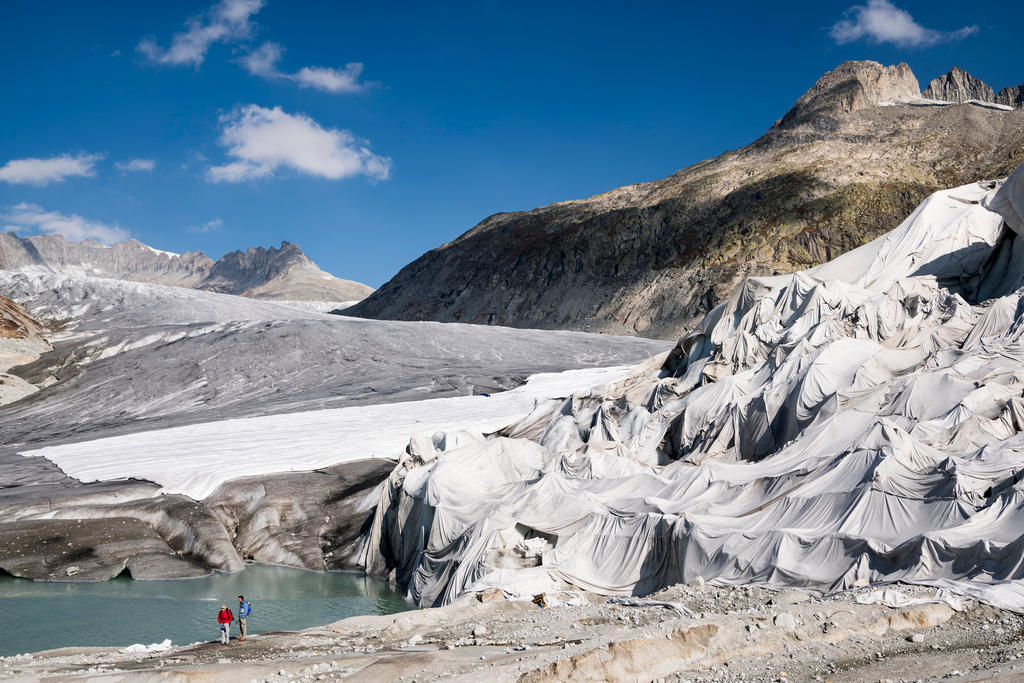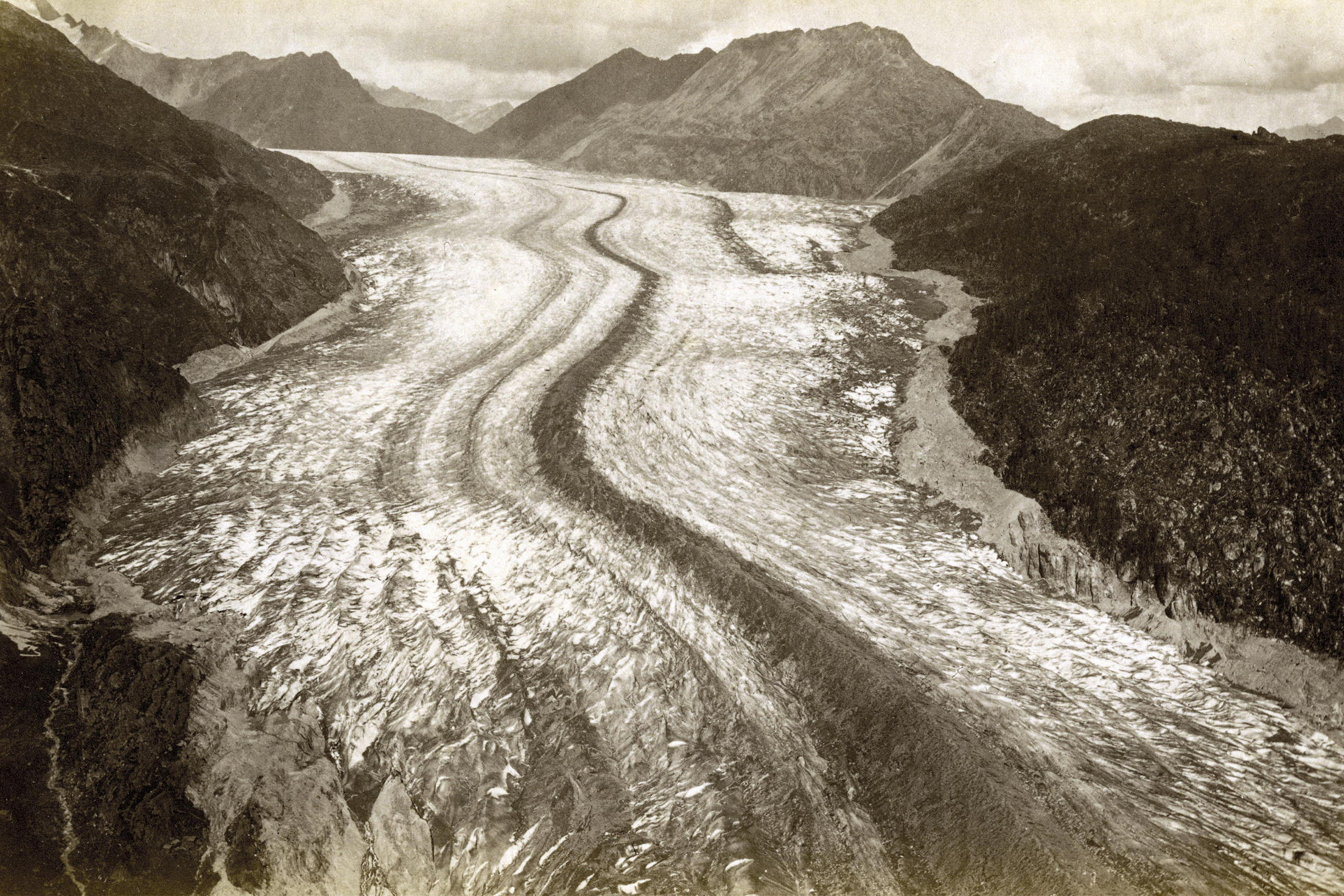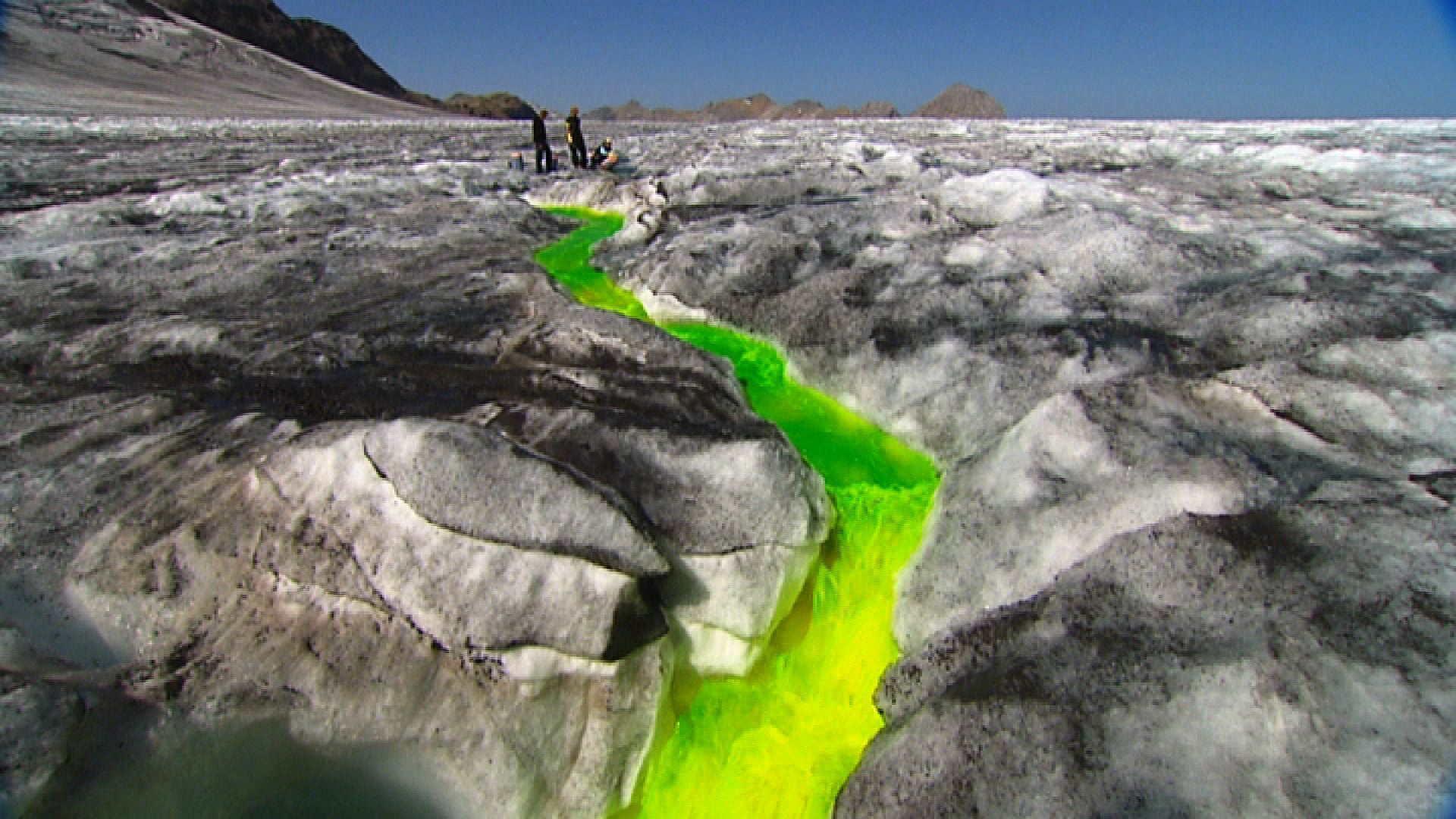Swiss glaciers shrink further after extreme 2018 weather

The see-saw weather extremes over the past year, including one of the hottest Swiss summers on record, was devastating to the nation’s glaciers, a new study has shown.
An exceptionally snowy winter was not enough to offset the extreme summer, which caused glaciers to lose 2.5% of their volume, the Swiss Academy of Sciences reported on Tuesday.
The depletion has added to a long-term trend that has seen Swiss glaciers lose one-fifth of their ice over the past decade; enough to cover the whole country by 25 cm of water.
It therefore makes the year 2017-2018 not only one of record temperatures and drought, but also one of the worst on record for glaciers, after the heat-struck summer of 2003.

More
Glaciers in the Alps – before and after
And yet the winter had seemed to provide ample cover: snow levels in the mountains towards the end of the season were the highest they’d been in 20 years (snow layers protect glaciers from the sun, as well as – in some cases – contributing to glacier growth).

More
Journey into the heart of a Swiss glacier
External linkHowever, this was no match for a summer that ended up being the third-hottest ever on record, a summer that also caused problems for farmers due to widespread drought.
“Since the beginning of records 81 years ago, there has never been so little fresh snow in summer,” the report authors wrote.
As an example, they cited measurements at the Weissfluhjoch mountain in southeastern Switzerland, where between May 17 and September 4, not a single snowfall of more than 1 cm occurred.
Indeed, “during 87% of summer days, temperatures, even at this altitude [2,540 metres above sea level], never managed to get below zero,” they said.
Matthias Huss, director of the Swiss network for glacier data, GLAMOS, had no qualms about pointing the finger of blame: “the shrinking of glaciers is directly linked to climate change,” he told the AFP news agency.
“Glaciers are very sensitive to higher air temperatures, which are clearly linked to higher concentrations of CO2 in the atmosphere,” he said, adding that if warming continues at the same pace, many smaller glaciers will completely disappear in the coming years.

More
How a glacier melts

In compliance with the JTI standards
More: SWI swissinfo.ch certified by the Journalism Trust Initiative








You can find an overview of ongoing debates with our journalists here . Please join us!
If you want to start a conversation about a topic raised in this article or want to report factual errors, email us at english@swissinfo.ch.